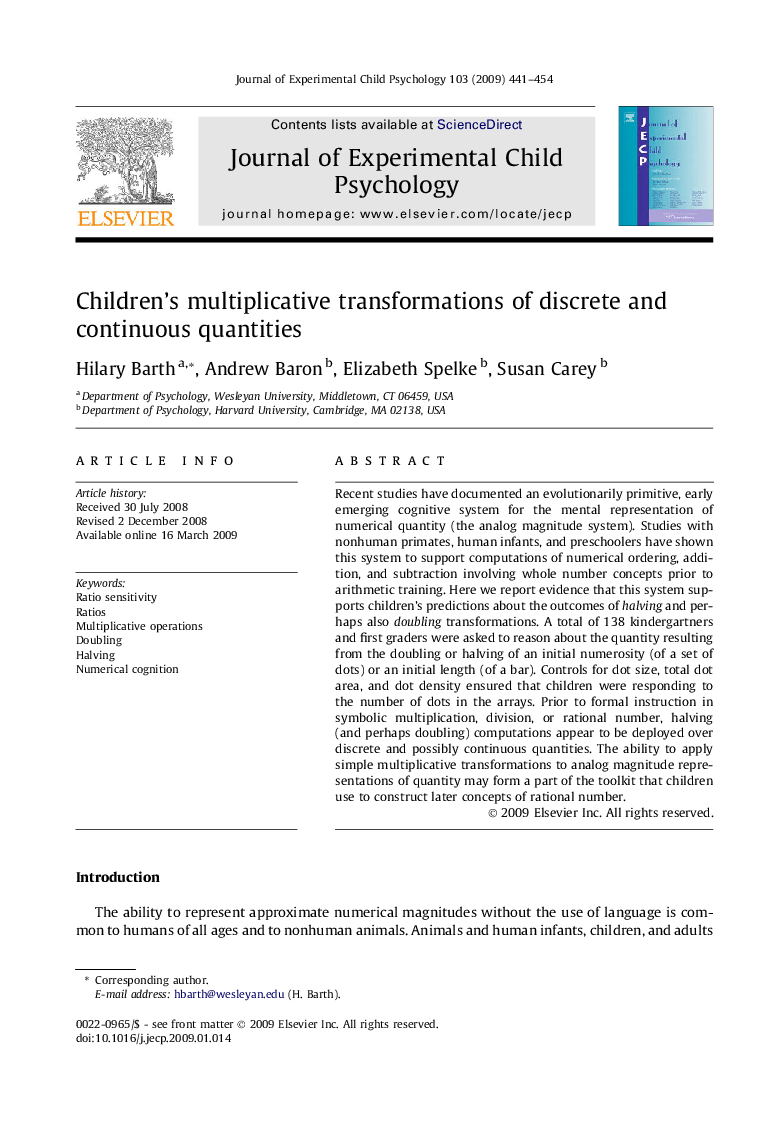| Article ID | Journal | Published Year | Pages | File Type |
|---|---|---|---|---|
| 918656 | Journal of Experimental Child Psychology | 2009 | 14 Pages |
Recent studies have documented an evolutionarily primitive, early emerging cognitive system for the mental representation of numerical quantity (the analog magnitude system). Studies with nonhuman primates, human infants, and preschoolers have shown this system to support computations of numerical ordering, addition, and subtraction involving whole number concepts prior to arithmetic training. Here we report evidence that this system supports children’s predictions about the outcomes of halving and perhaps also doubling transformations. A total of 138 kindergartners and first graders were asked to reason about the quantity resulting from the doubling or halving of an initial numerosity (of a set of dots) or an initial length (of a bar). Controls for dot size, total dot area, and dot density ensured that children were responding to the number of dots in the arrays. Prior to formal instruction in symbolic multiplication, division, or rational number, halving (and perhaps doubling) computations appear to be deployed over discrete and possibly continuous quantities. The ability to apply simple multiplicative transformations to analog magnitude representations of quantity may form a part of the toolkit that children use to construct later concepts of rational number.
